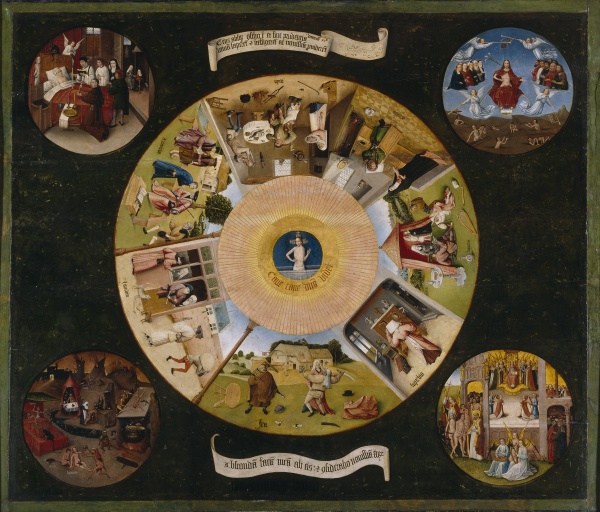Facts About The Seven Deadly Sins and the Four Last Things
"The Seven Deadly Sins and the Four Last Things" is a captivating painting, believed to have been created by Hieronymus Bosch or one of his followers around the year 1500. Its authenticity has been debated since 1898, but it remains an intriguing piece of art displayed at the Prado Museum.
The painting comprises a series of circular images, with four smaller circles depicting the Four Last Things: Death, Judgment, Heaven, and Hell. These encircle a larger central circle illustrating the Seven Deadly Sins in a unique manner—using scenes from everyday life rather than solely symbolic representations.
At the core of the central circle, you find the eye of God, with Christ rising from his tomb. Below this is a Latin inscription warning, "Beware, Beware, The Lord Sees." Additionally, Latin phrases from the Book of Deuteronomy are inscribed above and below this central image.
The question of who actually painted this piece and when has sparked much debate. Some scholars believe it was completed by one of Bosch’s students, while others assert Bosch himself was the artist. Experts have analyzed the painting's style, costumes, and materials to determine its origins, generally dating its creation between 1505 and 1510. Though some speculate it might be a copy, features such as changes made during the painting process (known as pentimenti) suggest it could be an original work.
Each section in the outer circle of the painting represents a different sin, replete with detailed depictions and symbolic elements. The four smaller circles are equally intricate, each illustrating aspects of Death, Judgment, Heaven, and Hell.
While the Prado Museum stands by the painting's authenticity, the Bosch Research and Conservation Project has cast doubts, proposing that it was likely painted by a follower of Bosch rather than the master himself. Despite the ongoing debate, the painting continues to captivate and intrigue viewers with its rich detail and powerful themes.

 Morocco
Morocco